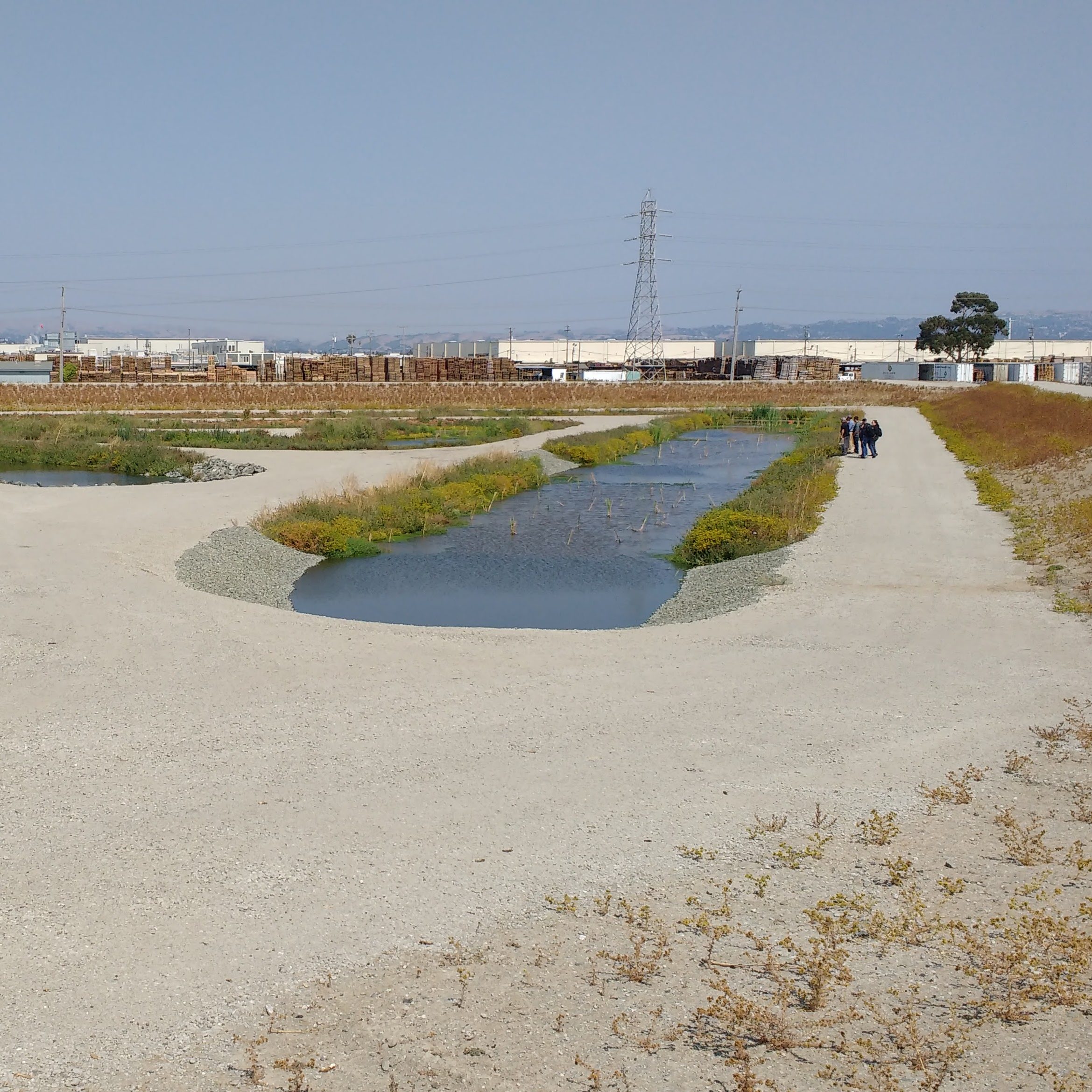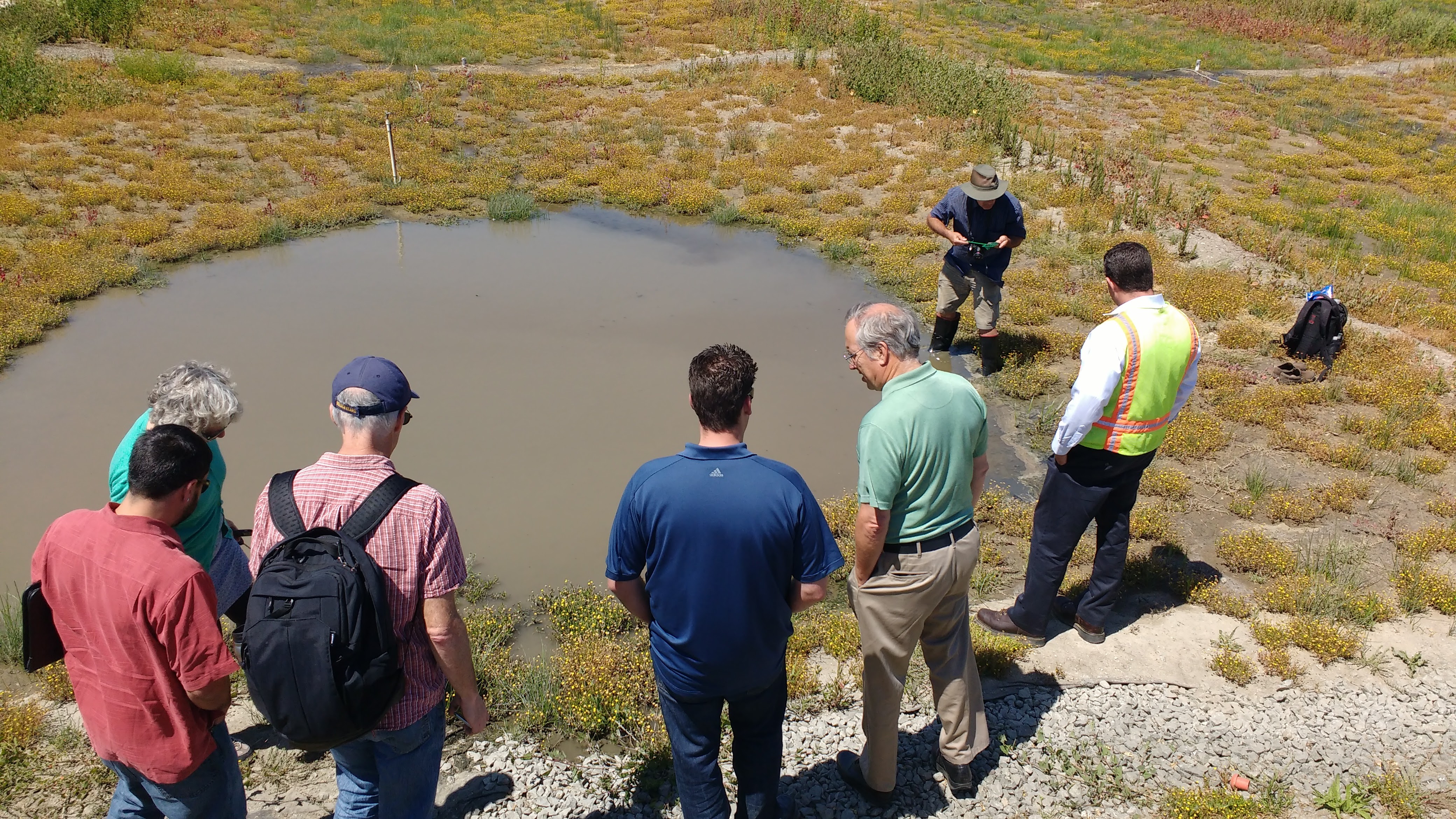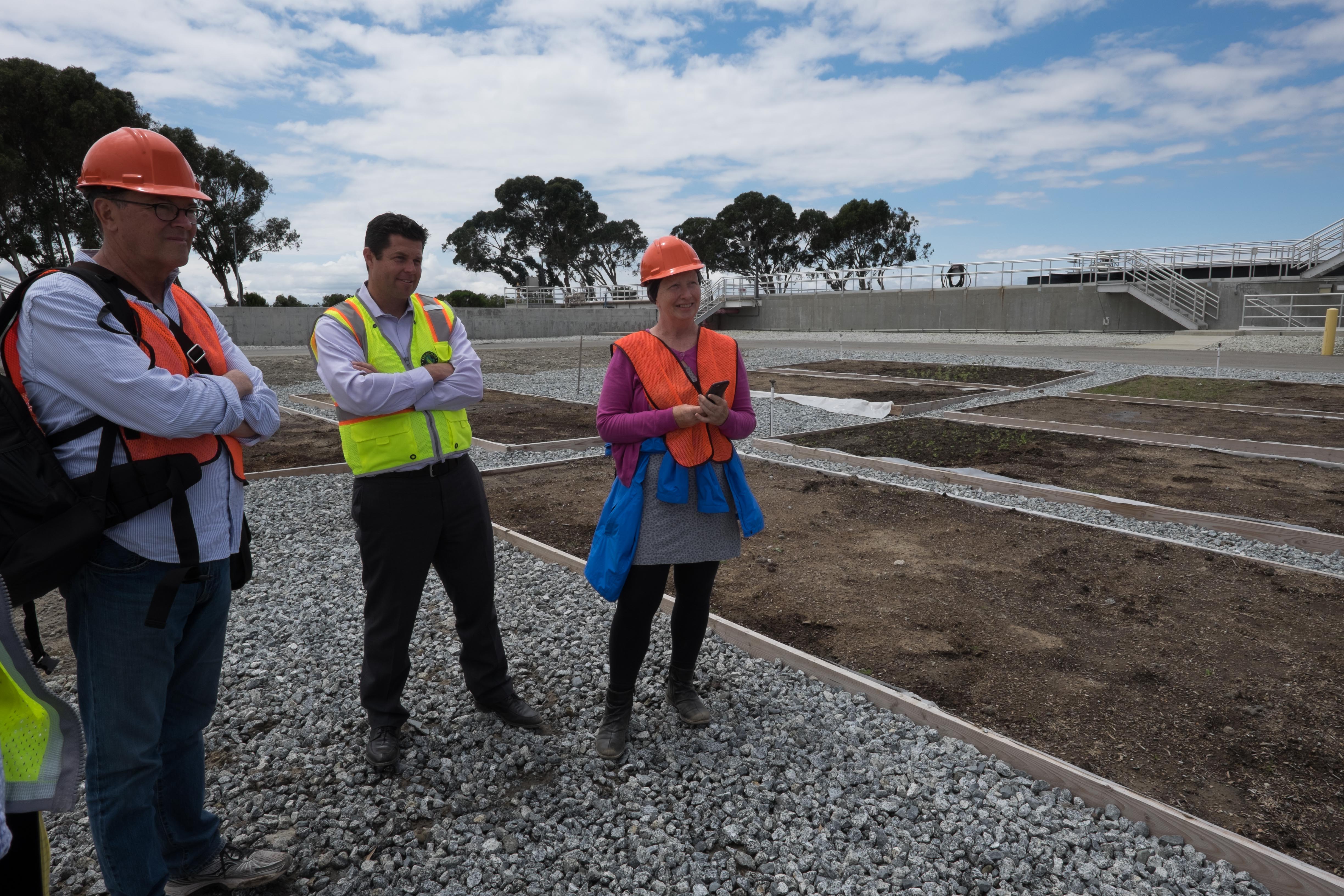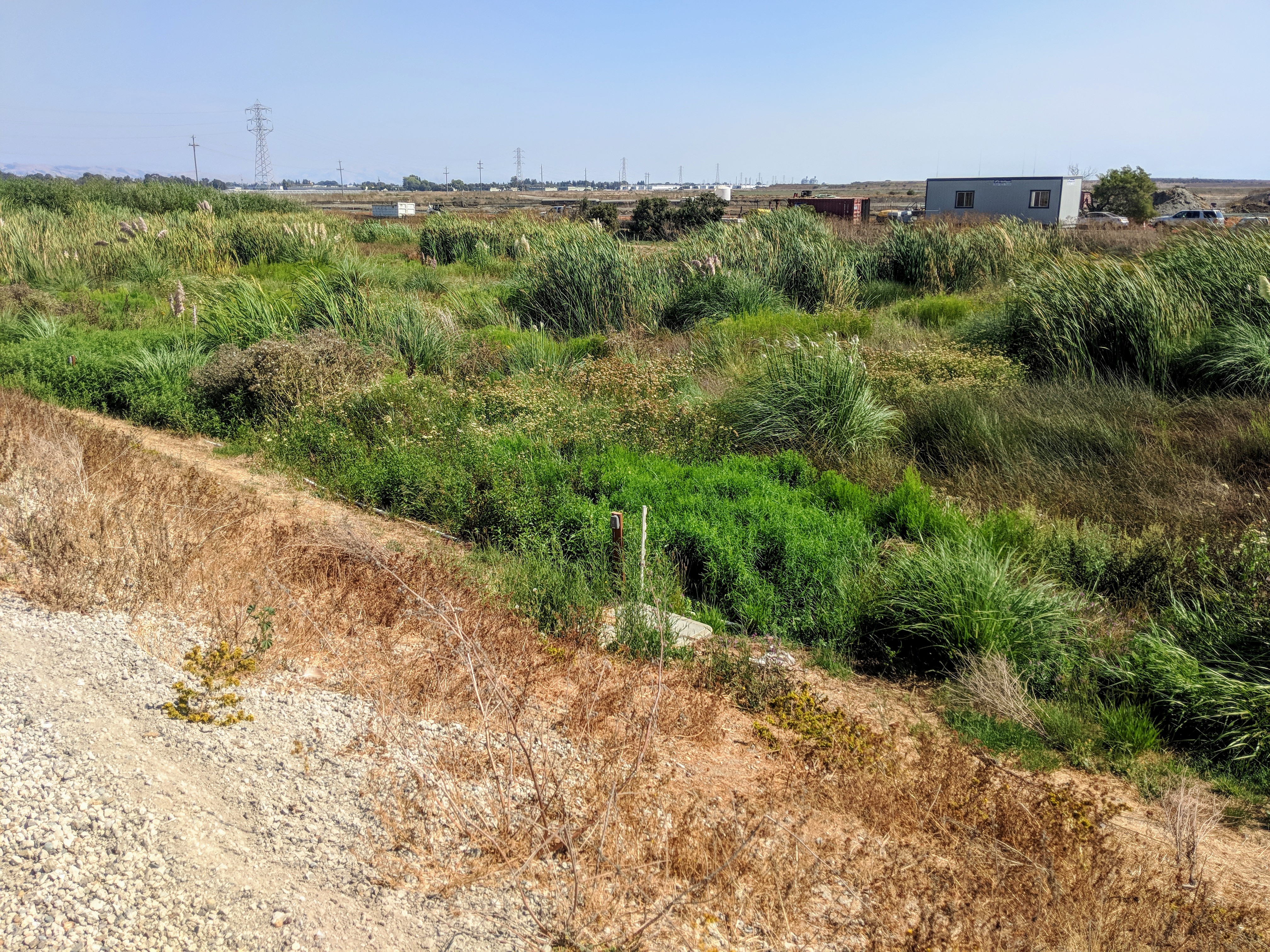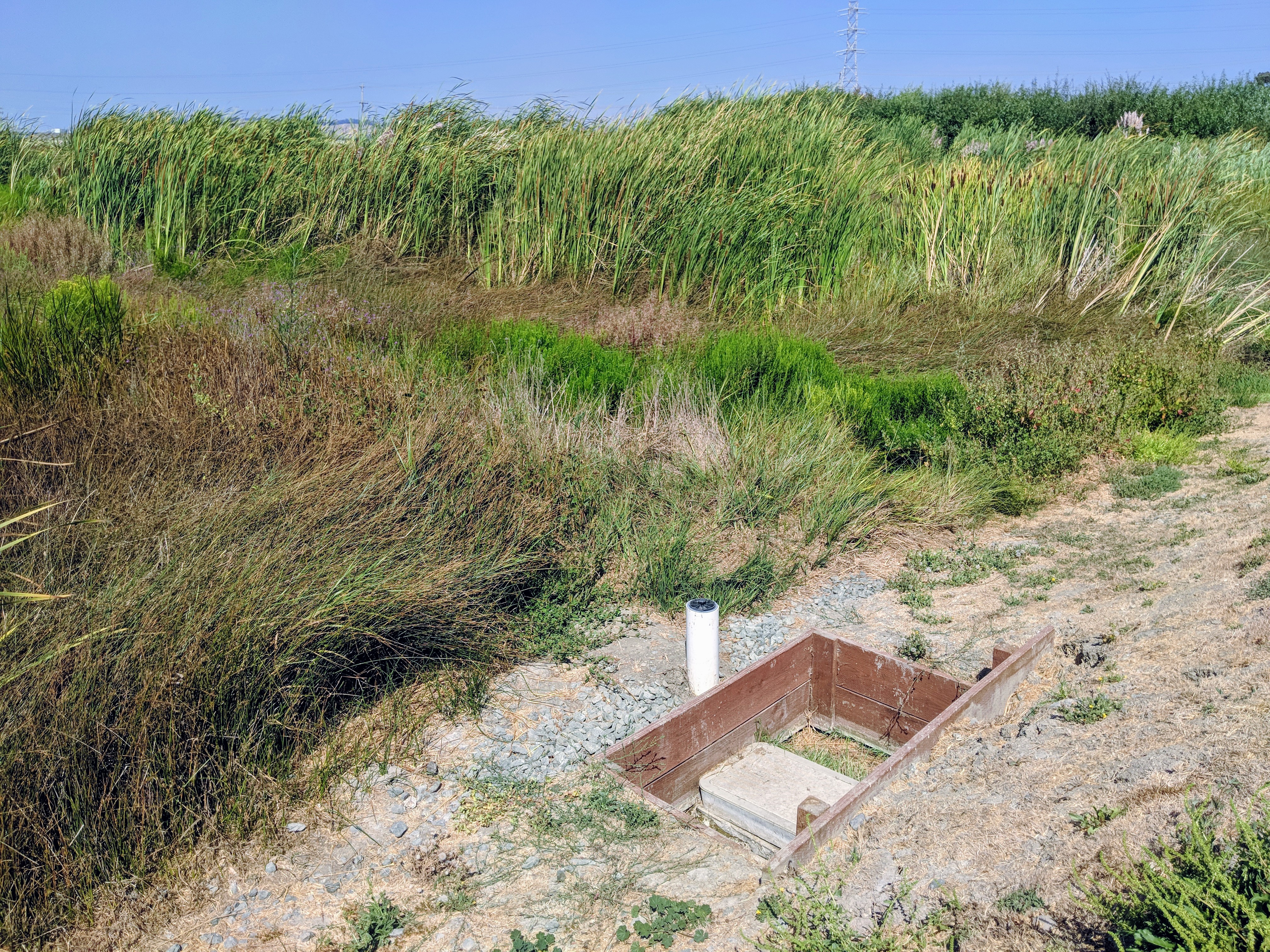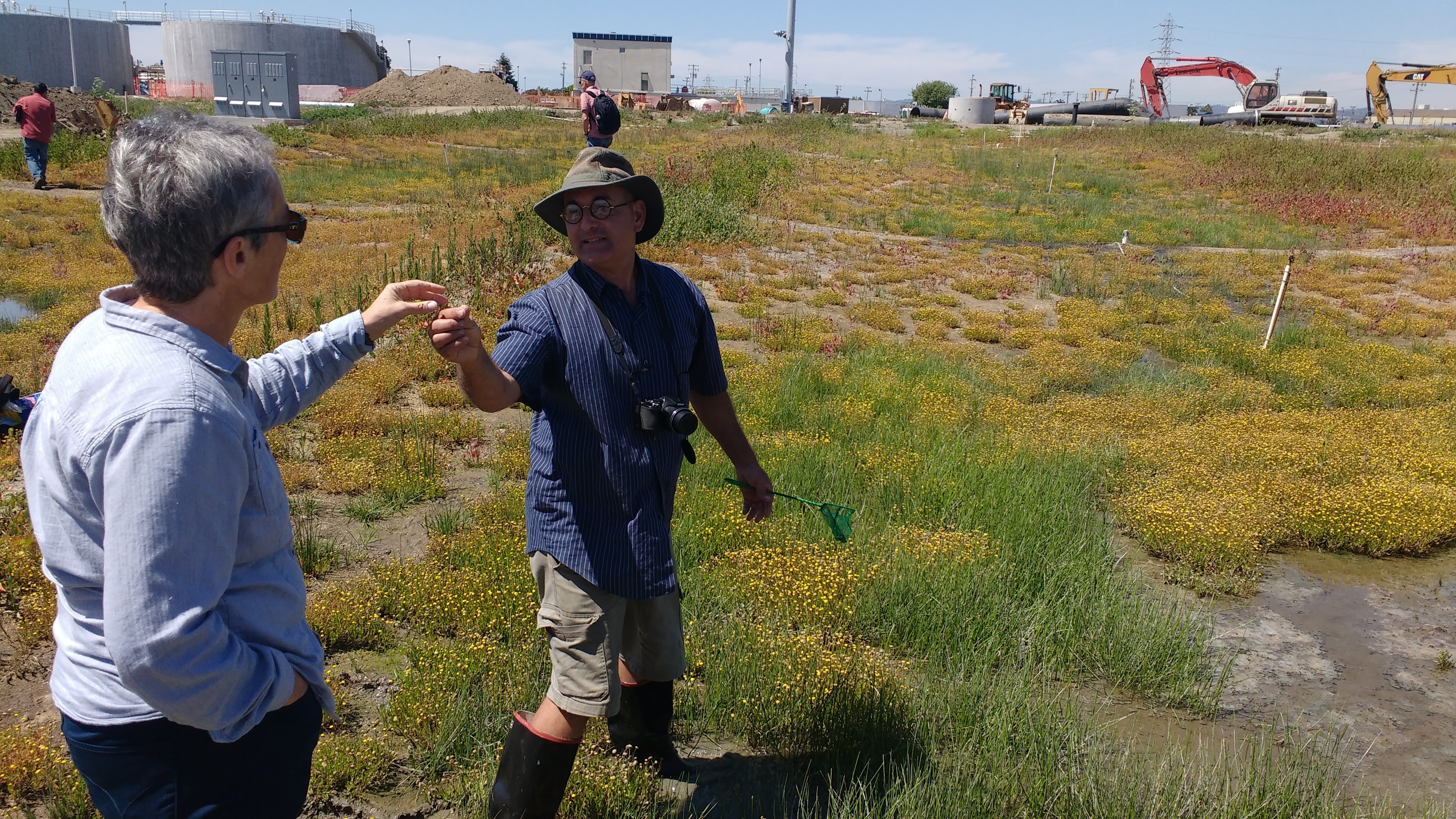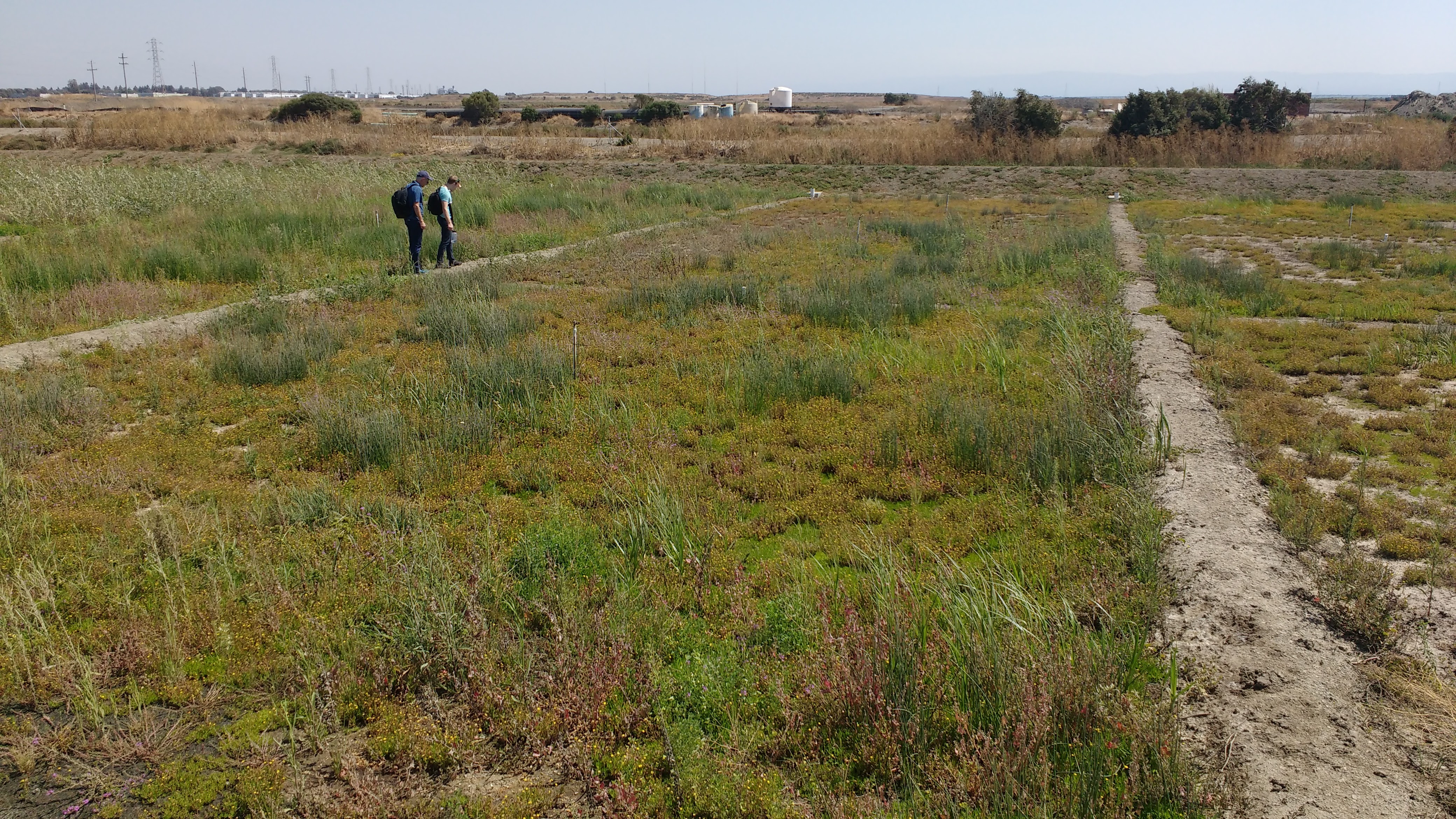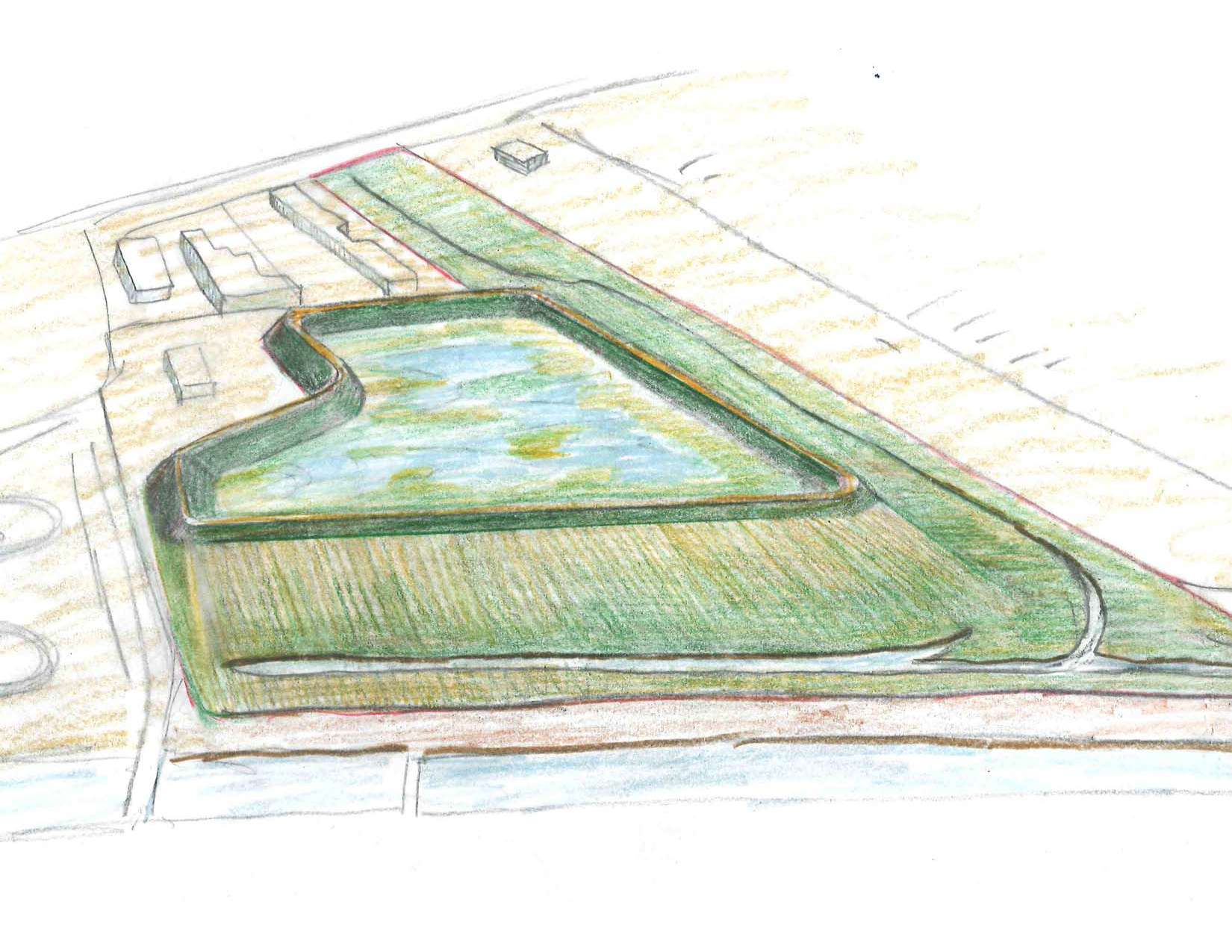Transforming Urban Water Initiative
From Gray to Green Shorelines
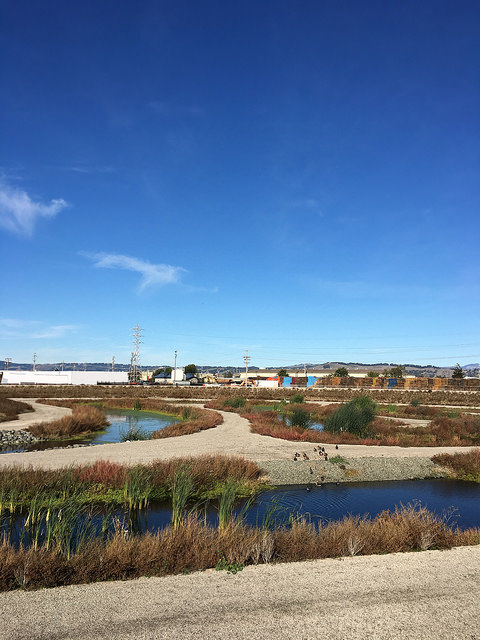
Oro Loma Living Laboratory
The Oro Loma Living Laboratory is designed to study the concept of a horizontal levee. Instead of a traditional levee to protect against storm surges, a horizontal levee uses vegetation on a gentle slope to break waves. The ecosystems that live on horizontal levees can thrive while helping to further process wastewater from treatment plants.
The Oro Loma Living Laboratory consists of a 1.4 acres experimental habitat slope. Wastewater that has already undergone secondary treatment is injected at the top and dispersed through 18 vertical cells, each one with a different combination of soil and plant habitat. The wastewater passes through the sub-layers of the cells, each one equipped with sampling wells at the top, bottom, and two thirds of the slope. The research team studies the idea that the sub-surface filtering processes will support native plants and purify the water enough so that one day this kind of system can be directly connected to the edge of the Bay.
Project Updates
A new phase of research is underway at the Oro Loma Horizontal Levee! Funding from the State Water Resources Control Board recently enabled the reconfiguration of a portion of the existing site to test more efficient designs and treatment of reverse osmosis concentrate (ROC). The results of research, led by UC Berkeley and funded by Valley Water, will help optimize future designs (replicability, treatment capacity, and cost-effectiveness) for other projects in the region and beyond. Read the cell reconfiguration report here to learn about the new designs and materials being examined.
Research Findings
Vegetation
The Oro Loma Horizontal Levee plant community and its transition over time were studied by a San Jose State University Master’s student. Read the study by Joia Fishman below.
Fishman, J. S. (2022). Fragmentation Drives Dominant Plant Encroachment on a Horizontal Wastewater Treatment Levee. San Jose State University Master’s Theses. 5261. DOI: https://doi.org/10.31979/etd.enqe-gq9r.
Water Quality
Water quality monitoring findings to date reveal several key components. First, the Oro Loma Horizontal Levee significantly removes wastewater-derived contaminants while providing valuable habitat. Some contaminants that were found to be removed were nitrogen, phosphate and pharmaceuticals. Second, contaminant removal was influenced by hydrology more than other design and operational parameters. Subsurface flow is the key! Finally, nitrogen was removed by microbial processing within the horizontal levee design. This research is being conducted by UC Berkeley researchers and funded by US EPA Region 9.
Read more in scientific publications from the Sedlak Research Group at UC Berkeley:
Stiegler, A. N., Cecchetti, A. R., & Sedlak, D. L. (2022). Plant Uptake of Trace Organic Contaminants in Effluent-Dominated Streams: An Overlooked Terrestrial Exposure Pathway. Environmental Science and Technology Letters, 9(11), 929–936.
PDF of Stiegler et al. 2022. Also see journal cover art by Angela Stielger.
Cecchetti, A. R., Stiegler, A. N., Gonthier, E. A., Bandaru, S. R. S., Fakra, S. C., Alvarez-Cohen, L., & Sedlak, D. L. (2022). Fate of Dissolved Nitrogen in a Horizontal Levee: Seasonal Fluctuations in Nitrate Removal Processes. Environmental Science and Technology, 56(4), 2770-2782.
PDF of Cecchetti et al. 2022.
Scholes, R. C., Stiegler, A. N., Anderson, C. M., & Sedlak, D. L. (2021). Enabling Water Reuse by Treatment of Reverse Osmosis Concentrate: The Promise of Constructed Wetlands. ACS Environmental Au, 1(1), 7–17.
Open access — please visit the link.
Scholes, R. C., King, J. F., Mitch, W. A., & Sedlak, D. L. (2020). Transformation of Trace Organic Contaminants from Reverse Osmosis Concentrate by Open-Water Unit-Process Wetlands with and without Ozone Pretreatment. Environmental Science & Technology, 54(24), 16176–16185.
PDF of Scholes et al. 2020.
Cecchetti, A. R., Systema, A., Stiegler, A. N., Dawson, T. E., & Sedlak, D. L. (2020). Use of stable nitrogen isotopes to track plant uptake of nitrogen in a nature-based treatment system. Water Research X, 9, 100070.
Open access — please visit the link.
Cecchetti, A. R., Stiegler, A. N., Graham, K., & Sedlak, D. L. (2020). The Horizontal Levee: A Multi-Benefit Nature-Based Treatment System That Improves Water Quality And Protects Coastal Levees From The Effects Of Sea Level Rise. Water Research X, 7, 100052.
Open access — please visit the link.
Scholes, R. C., Prasse, C., & Sedlak, D. L. (2019). The Role Of Reactive Nitrogen Species In Sensitized Photolysis Of Wastewater-Derived Trace Organic Contaminants. Environmental Science & Technology, 53(11), 6483-6491.
PDF of Scholes et al. 2019.
Bear, S., Nguyen, M., Jasper, J., Nygren, S., Nelson, K., & Sedlak, D. (2017). Removal Of Nutrients, Trace Organic Contaminants, And Bacterial Indicator Organisms In A Demonstration-Scale Unit Process Open-Water Treatment Wetland. Ecological Engineering, 109, 76-83.
PDF of Bear et al. 2017.
